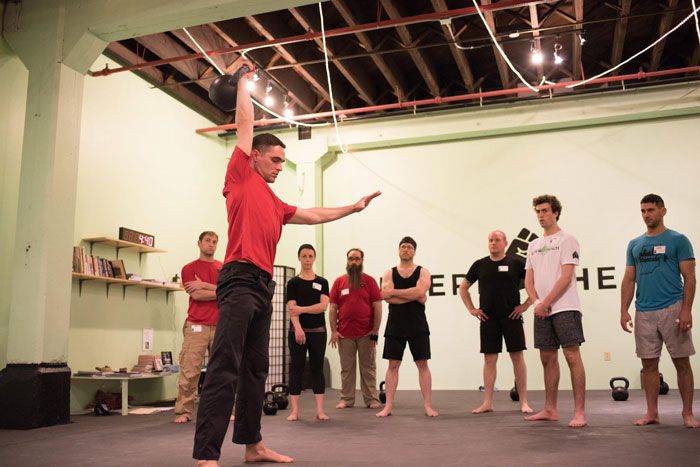
First off, I’d like to admit that I love donuts. It may or may not have been the years of skipping Sunday Boy Scouts to watch The Simpsons with my dad that programmed my subconscious to love donuts but nonetheless, I love donuts. Would I eat them all the time? Only if I wanted to be as soft and squishy as the crème filled varietal. I’ve come to learn that in order to have a donut here and there, I need to eat some kale salad. So what’s all this donut and kale salad talk have to do with CrossFit and kettlebell training? Everything…and here’s why.
I’ve learned to appreciate CrossFit over the years. Many clients that I train with participate in it, love it, and swear by it. If it weren’t for Crossfit, I’m not sure kettlebells and dinosaur training would be so popular today. CrossFit has popularized otherwise forgotten strength secrets like carrying heavy stones, pushing and pulling heavy loads, and of course, Olympic Lifting. But, it’s the Hardstyle training methods that we teach as RKCs that make these lifts safe and effective. You could say it’s a match made in heaven! So what’s with the whole kale salad and donuts analogy? Well, the vast majority of the people I know who participate in CrossFit quickly realize that they can’t only do CrossFit. They need their kale salad, which in this analogy is Hardstyle kettlebell training.
Why?
Kettlebell training serves as corrective exercise and therefore has functional carry-over to other intense physical activity, such as CrossFit. One must master his/her breath, the hinge, the wedge and gain strong grip strength in order to perform such exercises as the Hardstyle swing, strict pull-up, Turkish get-up, snatch and strict press. Guys like Bolt take home gold medals for having a strong hinge, wedge, wrists, feet and coordinated breath. When you take talent and combine the skills required of an RKC, you’re on your way to a gold medal, so to speak. You’re a strong and functional athlete.
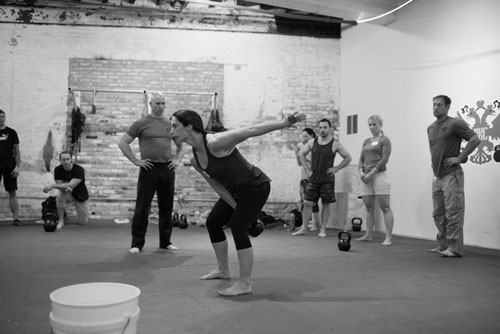
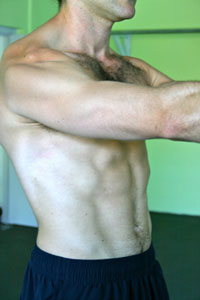
Wedge = shoulders packed, pelvis neutral, glutes locked and abs flexed rock solid.
The general population does not lead a physically challenging lifestyle. We type, we click, we press, and we swipe to “work” our grip strength. Our daily squatting happens in the form of on-and-off the toilet and up-and-down off a chair. That said, we don’t have the wrist strength and the hip/lumbar/thoracic mobility to safely barbell snatch overhead and catch the bar without something debilitating happening; hence the high injury rate associated with intense physical activities. I’ve learned that you can greatly reduce debilitating injuries during any activity simply by learning functional movement patterns and gaining strength with RKC kettlebell training. It’s fun to eat donuts just like it’s fun to snatch a barbell. But you can’t eat donuts all of the time just like you can’t snatch a barbell all of the time. You’ve got to have your kale salad just like you’ve got to have your corrective exercises.
I here’s a major example of how one can utilize Hardstyle kettlebell training as a form of corrective exercise to enhance their athletic performance at CrossFit:
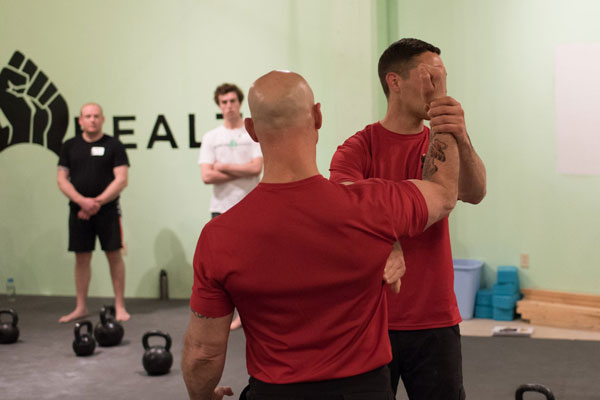
Wrist strength. Many movement patterns in Olympic lifting require catching a fast moving weight with the wrists in extension. This pattern forces the body to respond with borrowed movement from the elbows, shoulders, back and knees putting the body in a dangerous and compromised position. In martial arts and fighting, this body position would require one to submit or tap out. You’re basically rendered useless as your successor could, if they wanted to, break your arm. Additionally, I want you to think for a second about how many sports and or physical activities require an emphasis on extended wrist positions. Here’s a few functionally and daily movements that DON’T require extended wrists: pull-ups, deadlifts, running, climbing, swimming, rowing, punching etc. Lifting weights in a way that means you could tear or break your arm is a bad idea unless you practice the solution!
Extended wrists in action as showcased by Jared Byczko, RKC and owner of CrossFit Naptown:
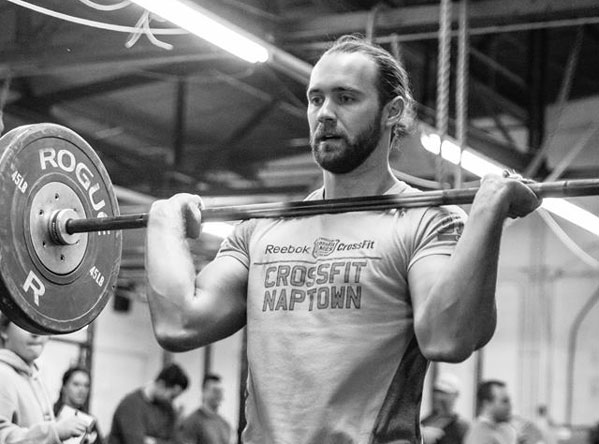
The solution: Hardstyle Turkish get ups, kettlebell presses, knuckle push-ups, strict pull ups and bottoms up presses. These exercises require you do the opposite of Oly lifts. In addition, the speed in which you perform such exercises is slow and focused. Wrists maintain a neutral and flexed position throughout each exercise therefore strengthening. Lastly, the body does not need to borrow movement to compensate, instead, one can utilize the wedge to support the weight. The wedge strengthens your whole torso and hips, while the neutral and flexed position of your wrists strengthens your wrists, hands, forearms, elbows, shoulders and postural chain.
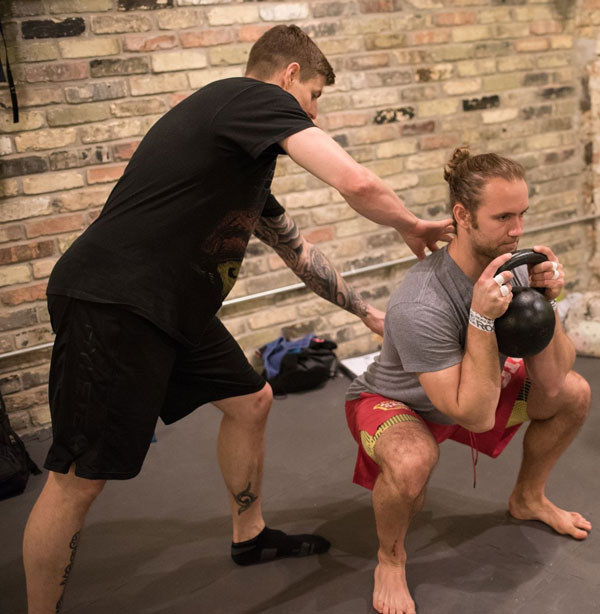
Now you can go a little more nuts next time you clean and jerk with the barbell for reps.
In the following program, I’m going to outline a simple and effective corrective exercise program that utilizes kettlebells. I’ve found that bodybuilders, CrossFitters, powerlifters, etc. all respect and enjoy this program simply because it’s difficult, yet restorative.
Day 1 – WOD – light – Practice your technique, don’t go heavy, don’t set new PRs, be mindful of form. 50-65% max
Day 2 – Hardstyle – Follow the program listed below. Ensure you practice the Hardstyle technique as it’s specifically designed to strengthen your wrists, postural chain, hands/wrists and feet.
Day 3 – WOD – medium – Same as Day 1 except go a little heavier (but not much!). 65-75% max.
Day 4 – Hardstyle – Follow the program listed below.
Day 5 – WOD – hard – heavy- 80-90% max.
Days 6 and 7 – Functional human activities such as running, jumping, swimming, climbing, carrying, etc.
You may have noticed on the hard WOD day I recommended going 80-90% max. Save your 110% effort for every 3-6 months. After all, the greats really only PR once or twice per year and that’s at a competition.
Hardstyle Program-Day 2:
Suitcase Deadlift – go heavy, 3-5 reps
Push ups – on front two knuckles if you can, otherwise on two kettlebells or Neuro-Grips
Rest 1:30
Repeat 4 sets
Farmer Carry – very heavy for 30 seconds. For extra grip strength, wrap a towel around the handle of your bell
OH Press – 3-5 per side, medium weight, stellar technique!
Rest 1:30
Repeat 4 sets
Core:
Reverse plank x10 seconds
Plank x10 seconds
Side planks, both sides, x10 seconds each
Rest 30-seconds
Repeat 2-4 sets
Hardstyle Program Day-4
Goblet Squat – heavy, 3-5 reps
OH Double press – medium, 3-5 reps
Rest 1:30
Repeat 4 sets
Pull ups – 3-5 reps
Split squat – medium, 3 reps per side
Rest 1:30
Repeat 4 sets
Core:
Log roll – 5 to the right, 5 to the left
Mtn Climbers – 20 reps
Pelvic Push Ups – 3 reps
Rest 30-seconds
Repeat 2-4 sets
***
RKC Team Leader Nick Lynch is a Strength and Conditioning Coach at Milwaukee School of Engineering University (MSOE). He owns Superb Health Milwaukee, a kettlebell studio in Milwaukee, WI. He has 13 years of full-time training and coaching experience and a lifetime of wellness education. Nick lives in Milwaukee, WI with his wife Natalie and son Weston.
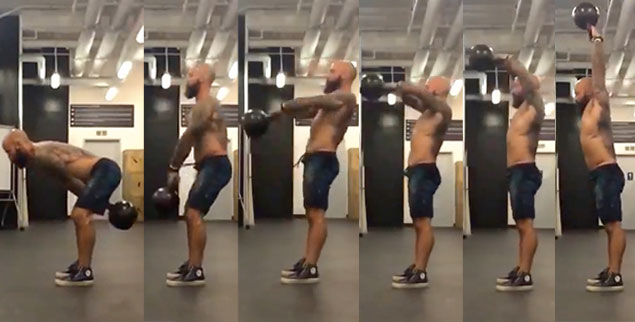
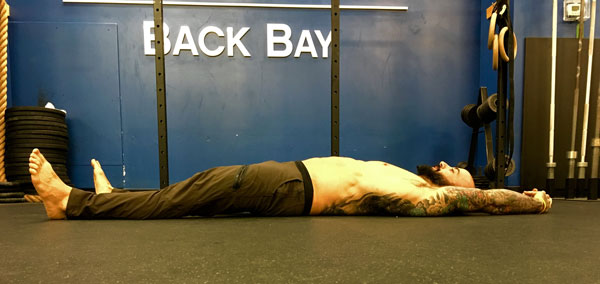
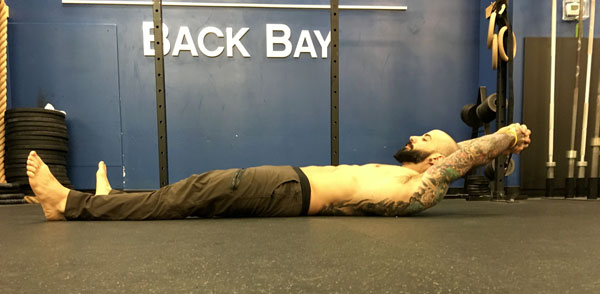
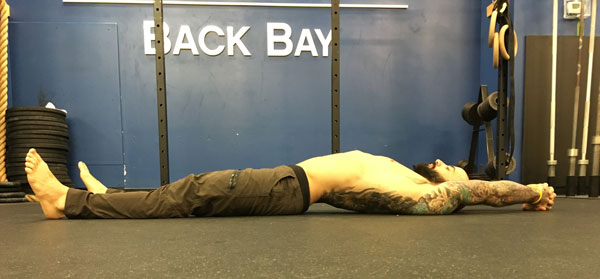 Both of these examples are failed overhead screens for the AKBS. Note: if you can see your arms in your peripheral vision, this indicates a failed overhead screen for the AKBS and more mobilization is required.
Both of these examples are failed overhead screens for the AKBS. Note: if you can see your arms in your peripheral vision, this indicates a failed overhead screen for the AKBS and more mobilization is required.